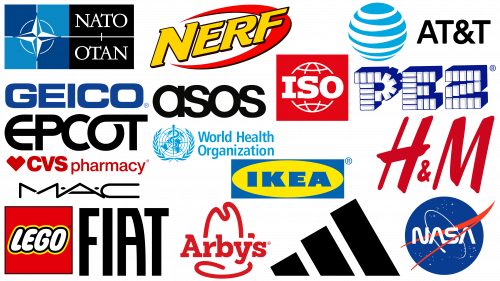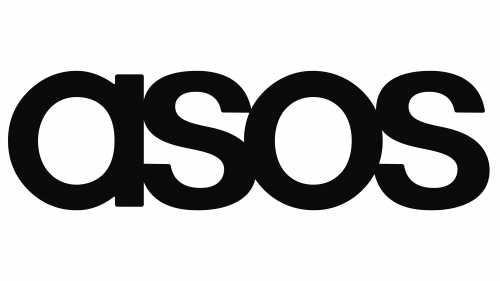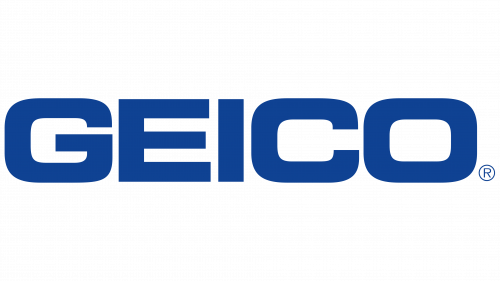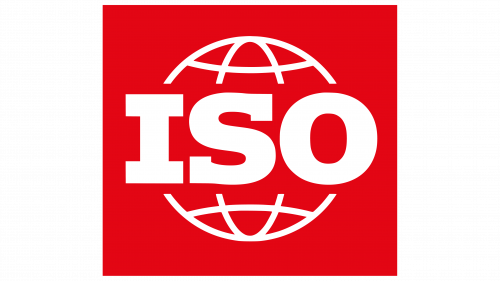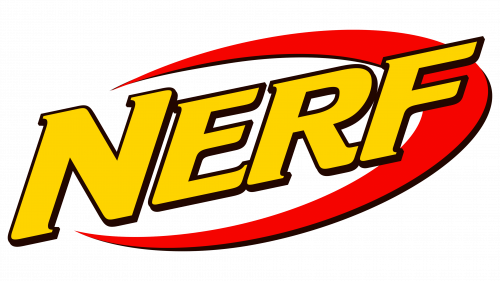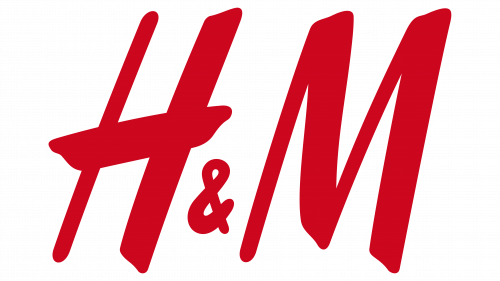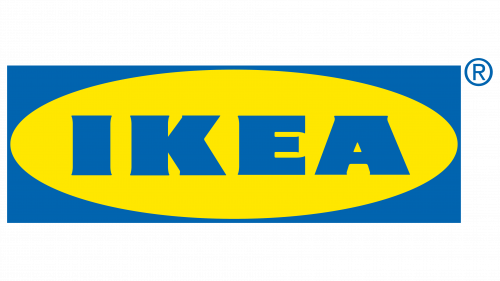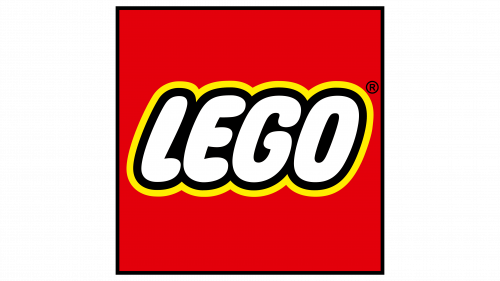The prevalence of using acronyms as company names in today’s society is undeniable. These abbreviated names are a convenient and memorable way to represent a company, especially in a digital environment where information spreads quickly.
The advantages of an abbreviated company name are obvious. Such names are designed for quick memorization and easy sharing of information. Acronyms can be especially relevant in the digital age, which prioritizes speed and efficiency. Such names often fit more seamlessly into digital environments, including social media, mobile apps, and web addresses.
Companies choosing acronym names also face some challenges. One major challenge is the potential for ambiguity. To consumers unfamiliar with the brand, acronyms give little insight into the company’s goals, values, and offerings. This can be an obstacle at the beginning of marketing efforts and may require additional resources to communicate to the public what the company stands for. Companies with similar acronyms can get caught up in brand confusion, reducing the effectiveness of their name as a unique identifier.
Determining the effectiveness of an acronym name to distinguish a company in a crowded marketplace is challenging. On the one hand, the brevity of a name can make it memorable, promoting recall and word-of-mouth marketing. On the other hand, the inherent ambiguity of such names can lead to a lack of differentiation, especially if consumers are unable to connect the acronym to the company’s core functions or values.
While the trend toward the use of acronyms in business seems to be in line with the demands of a rapidly evolving digital society, this strategy carries both benefits and risks. Success in this area requires more than just choosing a catchy set of initials; it requires strategic branding and ongoing training to ensure that the acronym becomes synonymous with the company’s identity and values.
What is an acronym? Examples of acronyms
In the vast arena of corporate branding and naming, brevity often becomes the soul of identity. As we delve deeper into the world of companies using acronyms as part of their branding strategy, it’s important to understand the subtle but important differences between acronyms, initialisms, and coined acronyms.
An abbreviation is an abbreviation formed by taking the initial letters of a phrase and building from them a new word that can be pronounced independently. A prime example is the abbreviation “SUNY,” which stands for the State University of New York. Such nomenclature succinctly reflects the extensive name of the brand and subtly conveys the essence of its identity. In the fast-paced digital age, acronyms are becoming increasingly common and serve as an effective means of communication. Familiar terms such as “LOL” and “BTW” demonstrate the power of acronyms for quick communication and understanding.
On the other side of the spectrum are initialisms. They are a set of initial letters from a name or phrase but do not form a new word. Instead, each letter is articulated separately. Brands such as “BMW” or “IBM” embody this concept. Their appeal lies in their simplicity, turning bulky names into compact, easy-to-remember identifiers. An illustration of this transformative power can be seen in the acronym for the Federal Bureau of Investigation: an expansive name is transformed into the concise “FBI.”
In the field of abbreviations, one can also find invented abbreviations. In this case, individual letters or syllables are merged to create a new term or identifier. An example is “PanAm,” formed from Pan-American Airlines. This strategy combines the attributes of acronyms and initialisms, resulting in names that often resemble real words, allowing companies to be creative and innovative in branding.
The choice of acronyms, initialisms, and invented abbreviations is not just a branding aesthetic. It’s a strategic decision that can impact brand recognition, memorability, and resonance. Acronyms are memorable, easy-to-pronounce brand identifiers. Initialisms provide simplicity and brevity by reducing complex names to their basic elements. Invented acronyms give room for imagination, allowing brands to carve out unique niches in a crowded marketplace.
Companies with acronyms in their names
In today’s dynamic business environment, the power of a concise and recognizable name cannot be underestimated. Brands such as CNN, NBC, IBM, and WHO, the famous World Health Organization, harness this power with acronyms. The choice of abbreviation style can have a significant impact on the perception and overall impact of a brand.
Names reduced into acronyms or invented acronyms often exude an aura of innovation and creativity. This is due to the blending of different letters or initials, resulting in a new, distinct phonetic unit. Such names are memorable and easier to pronounce, making them the best choice for companies looking to create a strong corporate identity.
On the other hand, concise initialisms may not have the same effect as acronyms. For example, ABC stands for “American Broadcasting Company,” but its letters don’t lend themselves as well to language as a word pronounced in the singular. Although they simplify long names, memorizing each letter can be a bit more time-consuming than memorizing a coined acronym.
The undeniable advantage of acronyms and abbreviations lies in their inherent simplicity. They convert verbose, descriptive names into compact, memorable forms. Although IBM has been a prominent player in the business sector for many years, not everyone can immediately recall that it stands for International Business Machines.
The strategic use of acronyms allows attention to be shifted away from potentially controversial or less favorable parts of the name. The American Association of Retired Persons chose the word “AARP” as its primary name. By emphasizing the acronym, it subtly shifts attention away from the term “retiree.” This tactic is important when certain words may not resonate with a segment of a brand’s target audience, such as active retirees about “Retirees.”
Especially when using acronyms, it’s a delicate balance of creativity, strategy, and perception management. Whether it’s the ingenuity of acronyms or the straightforwardness of initialisms, the ultimate goal is to make a meaningful connection with the audience while maintaining the essence and values of the brand.
Acronyms for business names, why do companies use acronyms in their names?
In today’s dynamic business world, concise and memorable branding is paramount. This has led to a surge in the use of acronyms and abbreviations to shorten long or complex names into easily digestible forms. Such naming techniques are common in industries ranging from tech startups and philanthropic organizations to antiquated institutions whose names did not prioritize brevity.
The use of acronyms and abbreviations gives a brand a modern and sophisticated look. For example, the fashion company ASOS once stood for “As Seen on Screen,” reflecting its origins as a platform for buying clothes shown in the media. This innovative approach to naming has redefined the clothing retailer, emphasizing its commitment to offering fashionable trends.
Among the many benefits of acronym-based branding is its simplicity. By reducing a long name to an acronym, companies make their names clearer and easier to remember. This allows for flexibility for future rebranding. As an example, the acronym “KVD” was originally associated with the celebrity Kat Von D. However, it has since taken on a different meaning, embodying values such as “Kara, Veritas, Decora” – value, truth, and beauty.
A significant drawback is their inherent ambiguity. To the uninitiated, such names may seem cryptic or ineffable. A classic example is “NERF,” which may seem arbitrary at first but stands for Non-Expandable Recreational Foam.
While the strategy of using acronyms and abbreviations offers a streamlined approach to branding, it requires thoughtful execution. Brands must be sure that the acronym chosen captures their essence and is compelling and distinctive enough to stand out in a busy marketplace. Striking a balance between memorability and meaning can result in a brand identity that resonates deeply with the target audience and stands the test of time.
What are the most popular acronyms in the naming world?
In a dynamic business environment, branding plays a key role in how a company presents itself. Acronyms, one common form of branding, have been adopted by many companies to make their names more concise and memorable. By looking at a few illustrative examples, you can get an idea of the effectiveness of this approach.
ASOS
ASOS is firmly established as a brand that originated in the United States and is often recognized by its acronym. In 2000, on the cusp of technological advancement and the spread of e-commerce, ASOS made its debut. The basic idea behind the company was to create a platform where consumers could easily find and buy products they saw on various screens. This led to the choice of the original name, As Seen on Screen.
With the passage of time and the diversification of the brand into different product categories targeting an ever-expanding customer base, there was a clear need for a rebranding strategy. Favoring simplicity and aiming for a broader connection, the brand switched to the acronym “ASOS.” This concise yet impactful name provides flexibility and allows the brand to resonate with many consumers.
EPCOT
Disney World, where magic comes to life, is home to a variety of parks that tell their own unique story. Epcot holds a special place for those intrigued by the possibilities of the future. Designed by Walt Disney in 1982, it is a testament to mankind’s dream of a brighter and more innovative tomorrow.
As one of four separate theme parks within the expanse of Walt Disney World, Epcot has always reflected the essence of international culture. Its very name, “Epcot,” echoes the park’s founding principle: the desire to create the cities of the future. Translated, the name means “Experimental Prototype Community of Tomorrow.”
As with many complex designations, the complex name can cause difficulty for many, especially younger visitors. Therefore, the decision was made to introduce the more concise “EPCOT.”
FIAT
The abbreviation FIAT, which resonates with both car enthusiasts and the general public, has its roots in the history of the automobile industry. Founded in 1899, this iconic brand has endured through the ages, firmly taking its place among the most famous names in the automotive industry.
A titan of the automotive industry, FIAT is the crown jewel of the Italian automotive industry and competes vigorously on the global stage. FIAT’s extensive line of vehicles, featuring Italian design and engineering, are often renowned for their style.
The name “FIAT” comes from “Fabbrica Italiana Automobili Torino,” which translates to “Italian automobile factory in Turin.” In the modern context, this extended name is rarely used in branding and advertising campaigns. Instead, the laconic “FIAT” is used, which reflects the uniqueness of the brand and its centuries-long loyalty to automotive excellence.
GEICO
Recognized as one of the leading insurers in the United States, GEICO has carved out a niche for itself by focusing primarily on vehicle and corporate property protection. The intriguing name “Government Employees Insurance Company” has been shortened to the more familiar acronym “GEICO.”
Founded in 1936, GEICO has expanded its reach to provide automobile insurance protection to countless consumers in all 50 states. In addition to comprehensive insurance solutions, the brand has further increased its visibility through strategic marketing. The animated gecko, lively and eye-catching, has become synonymous with GEICO’s advertising campaigns. This association is not accidental: the phonetic similarity of the words “GEICO” and “Gecko” served as the basis for the creation of this mascot, which further cemented the brand in the minds of consumers.
ISO
Established in 1947, ISO is the premier organization dedicated to developing standardization protocols for various sectors and industries. The scope of this organization includes not only technical parameters but also non-technical areas to maintain uniform standards at all levels. It has a global reach and is present in more than 167 countries.
The abbreviation “ISO” stands for “International Organization for Standardization”. The designation does not match the acronym directly; this unusual arrangement was chosen to make the name universally recognizable, regardless of language. The word “ISO” comes from the Greek word “isos,” meaning “equal,” which conveys the underlying principle of the organization: to ensure uniform standards throughout the world.
The choice to abbreviate the name makes it easier to remember and lends itself well to graphic representation. Over time, the ISO emblem has come to symbolize reliability, consistency, and global harmonization of standards, making it a trusted name among industries and companies around the world.
MAC
MAC, also commonly known as MAC Cosmetics, is a renowned global beauty and personal care brand. It came into existence in 1984 through the joint efforts of Frank Toscana and Frank Angelo. Although the company name is often distinguished from the well-known computer brand by the extended name “MAC Cosmetics,” it is an acronym that stands for “Makeup Art Cosmetics.” The full form of the acronym somewhat borders on redundancy, as it essentially translates to “makeup art cosmetics.” However, this little quirk in the name does little to undermine the brand’s reputation.
The abbreviation serves not only as a shortened name but also as a corporate style, which reflects the essence of the company, focused on the artistic approach to cosmetics. Thanks to this, MAC successfully keeps its position at the forefront of the cosmetics industry, attracting a wide and diverse consumer audience around the world.
NASA
Founded in 1958 by the US federal government, NASA has since cemented its reputation as a beacon of space exploration. Tasked with penetrating the mysteries of space and expanding human understanding of celestial bodies, this American space agency has made significant strides in exploring the vastness beyond Earth’s atmosphere.
NASA’s full name, the National Aeronautics and Space Administration, reflects its primary functions: overseeing aeronautics research and directing space flight. Despite the fact that such a broad name allows for a more detailed familiarization with the agency’s activities, the concise acronym “NASA” resonates with everyone.
By shortening its name to a simple and memorable acronym, NASA has ensured that its brand remains accessible and recognizable even to people without a deep knowledge of space science.
NATO
After the end of World War II in 1949, NATO evolved into a united front that united countries on both sides of the Atlantic. This intergovernmental military alliance, whose members include 30 countries in Europe and North America, has played a key role in shaping the geopolitical dynamics of the post-war period.
Its primary mission is to develop and implement collective security mechanisms that ensure mutual defense against external threats. Over the past decades, NATO has expanded its sphere of influence, adapting to changing geopolitical scenarios and developing defense and security cooperation among member countries.
The enlarged name, North Atlantic Treaty Organization, fully reflects its essence and fundamental principles. For brevity and ease of perception, the abbreviation “NATO” is most often used in everyday speech. This simplified designation has become recognizable, symbolizing unity and cooperation in the field of defense.
NERF
Created in the United States, the Nerf toy brand has gained considerable popularity and spread its influence to many corners of the world. Since its debut in 1969, the brand has been taken over by Hasbro Cosmetics. A hallmark of the Nerf product line is the plethora of foam-based play items that appeal to both young and young-at-heart. These include unique foam weapons, balls, and other outdoor products. An interesting aspect of these items is the foam used in them, aptly named “Non-Expandable Recreational Foam.”
The use of the acronym “NERF” instead of the full terminology is no accident. Instead of a technical term, this acronym is more associated with energy, friendliness, and ease of communication. This approach to branding is very important when it comes to catering to the interests and aspirations of the youth market.
WHO
The United Nations, with its vast network of specialized agencies, has long championed the causes most important to humanity. In this line, the World Health Organization, or WHO, ranks as one of the leading global health organizations. Founded in 1948, the organization’s mission is to advance medical knowledge, combat potential pandemics, and improve the general welfare of people.
Covering all continents, WHO’s activities are carried out through 150 field offices around the world. These offices are critical points of contact, liaising with local governments and health departments to ensure the delivery of health information, resources, and assistance to those in need.
While many organizations choose acronyms for brevity, the word “WHO” seems particularly appropriate for this health structure; the acronym subtly echoes the organization’s core mission, emphasizing its focus on the “who” – people, communities, and countries. Despite the widespread acceptance of the acronym, the World Health Organization sometimes reverts to its full name for promotional purposes.
Popular abbreviated brand names
In the motley tapestry of corporate terminology, the role of acronyms stands out. Abbreviations are widespread, especially when a verbose company name naturally lends itself to forming a concise and memorable acronym. The challenge is to create an acronym that fits a variety of organizations, especially if their convoluted names don’t fit into the common approach to creating acronyms. Therefore, many are leaning toward using “initialisms” or hand-crafted acronyms.
Initialisms, by definition, are abbreviations in which each letter is pronounced separately rather than as a word. This subtle distinction between acronyms and initialisms becomes apparent when you consider some of the well-known names in the corporate world.
Adidas
Brand names can be the subject of speculation, and Adidas is no exception. Myths often arise among fans and enthusiasts that become part of the unofficial brand legend. One of the most common misconceptions is that Adidas stands for “All Day I Dream About Soccer.”
If one delves deeper into the origin story of the Adidas name; however, a simpler and more personal story is revealed. Adolf Dassler, the founder of the company, gave it its name. He combined “Adi” (a common abbreviation for Adolf) with the first letters of his last name, “Das,” resulting in the name “Adidas”. This way of naming indicates that the founder of a company can have a huge impact on its uniqueness. Myths can be fun, but understanding the true story behind a brand’s name can provide a deeper appreciation.
Arby’s
Arby’s, founded by brothers Raffel, Leroy, and Forrest, represents a distinctive approach to brand name creation. Rather than sticking to traditional methods of abbreviating names or initialisms, the founders took a more innovative route. Inspired by the common initials “RB,” they breathed life into the term “Arby’s.”
This innovative play on words gave the brand a unique identity. The resulting name has a memorable sound and is easy to pronounce, which is essential for brand recall in the competitive fast food sector. By using their initials and creating a memorable name, the Raffel brothers laid the foundation for what has become a recognizable brand in the fast food industry.
AT&T
AT&T, synonymous with telecommunications, is an acronym for the American Telephone and Telegraph Company. When it came on the market in 1885, the full, expanded name was in vogue, reflecting the naming norms of businesses in that era.
As times changed and the pace of business accelerated, brevity in branding became paramount. The long “American Telephone and Telegraph Company” was shortened to the clear and memorable “AT&T.” This acronym doesn’t just exist on American shores; it has become entrenched worldwide, a testament to its enormous influence in the telecommunications sector.
CVS
Founded in 1963, CVS has become a recognized global leader and a key figure in the American healthcare sector. The company was originally called Consumer Value Stores. This name adorned the facades of many of the first stores and marketing materials, reflecting the company’s commitment to consumer-oriented values.
By 1964, then-CEO Tom Ryan proposed a significant branding change. This led to the introduction of the abbreviated “CVS” as the company’s primary name. The acronym originally stood for Consumer Value Stores, but the company recognizes that “CVS” has evolved. This evolution has optimized the brand’s image and strengthened its commitment to serving customers efficiently, offering value for money, and providing a high level of service.
H&M
H&M, a globally recognized titan of fashion retailing, traces its history back to 1947. Originally, the company was called “Hennes,” which means “She” in Swedish, and its main task was to create women’s clothing. This terminology was quite appropriate during the company’s formative years, as it focused on women’s fashion.
When the winds of change blew, and the brand expanded its horizons, it attached the Maritz Widforss brand. This acquisition was the turning point that led to the rebranding. Initially adopting the name “Hennes and Mauritz,” the brand soon underwent further simplification, and in 1974 the iconic “H&M” was born. This updated name exuded a modern mood and emphasized the brand’s desire for simplicity and modernity. It paved the way for the company to expand beyond womenswear, embracing different genres of fashion.
IKEA
IKEA is not a traditional Swedish word but an acronym that reflects various aspects of the founder’s life and background. Founded in 1945, the company owes its name to a unique combination of initials and geographical locations associated with its founder, Ingvar Kamprad.
The acronym combines Ingvar Kamprad’s initials with the initials of Elmtaryd, the farm where he grew up, and Agunnaryd, the small village where the farm was located. This abbreviation serves several purposes at once: it is a tribute to the founder of the company, a subtle hint of its Swedish roots, and a distinctive corporate identity.
IKEA has combined a whole range of meanings in a simple and memorable name. It both reflects the essence of the company’s heritage and serves as a unique identifier in the highly competitive home furnishings market. The name IKEA has become synonymous with affordable and quality home furnishings and is recognized not only in Sweden but around the world.
Lego
Originating in Denmark in 1949, Lego has become a huge global success in the toy industry. This iconic brand is known for its commitment to producing high-quality plastic construction toys, from intricately designed bricks to versatile building sets. Revered for their quality, these toys have inspired generations.
The etymology of the brand name is rooted in Danish culture. The term “Lego” comes from “Leg Godt.” This phrase, which eloquently captures the essence of “playing well,” encapsulates the company’s mission and vision. The decision to adopt the succinct name “Lego” was a strategic one. While the word “Leg Godt” resonates deeply in the Danish cultural context, it was necessary to use a more universal term aimed at a broader global audience. By switching to “Lego,” the company easily bypassed possible language barriers, ensuring a smoother international impact.
PEZ
PEZ exemplifies the power of branding, resonating with many people, both young and old, around the world. In its early days, in 1927, the company was a mint candy company. Over the years, the brand has expanded to include a variety of candy flavors neatly packaged in iconic dispensers.
The origin of the name “PEZ” comes from the German lexicon. It is an abbreviation formed from the word “Pfefferminz,” which means “mint” in English. This nomenclature pays homage to the company’s roots while presenting a bright and memorable label that is perfectly suited to the target audience – young people and those who care.
Learning from businesses with acronym names
In this day and age, where time is of the essence and attention spans are getting shorter, abbreviated company names have proven to be a strategic advantage. This brevity ensures easy memorability for consumers and creates an aura of modernity and efficiency. A clear, concise brand name often resonates in the fast-paced digital age as brands fight for a place in consumers’ minds.
The art of abbreviation is not just about shortening a long name. It is about expressing the essence and core values of a brand in a compact way. While an acronym may consist of just a few letters, those letters can tell a whole story that reveals a brand’s origins, ethics, and ambitions.
Think of brands with well-known acronyms or abbreviations: often, there is a story behind those few letters, subtly hinting at the company’s journey or the founder’s vision. Such nuances create an emotional connection with the audience, making the brand more recognizable. For companies pondering a suitable acronym, it is important that the chosen acronym or abbreviation does not lose the brand’s personality.
